I recently wrote a fourth preface for my classic Infinity and the Mind. It’s out in a new 2019 edition from Princeton University Press in paperback and ebook. The book has sold several hundred thousand copies by now. I wrote it over about four years in my early thirties, around 1980.
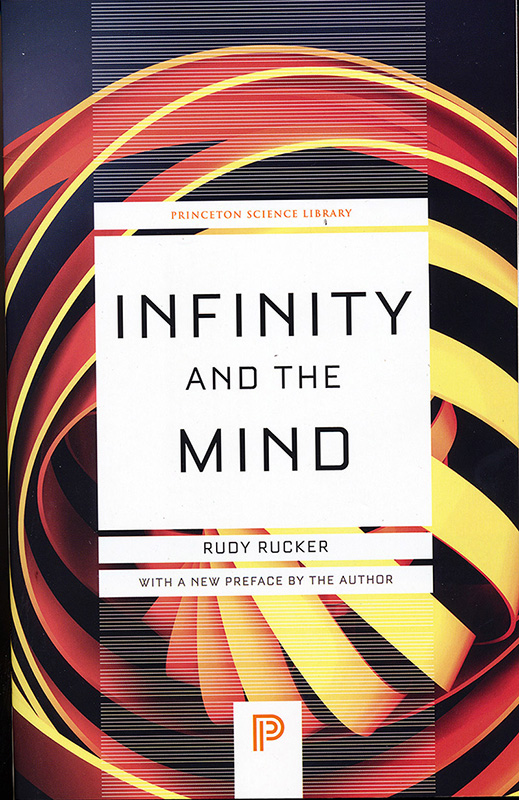
In my latest preface I decided to go for it and argue that the physical space that we live in is infinite in the highest possible degree. We live, I claim, in an Absolute Continuum. By way of explaining what that means, I’m going to put an edited (and surreally illustrated) version of the preface into today’s post.
Let me also mention that, by way of action-testing my idea, I wrote a new SF story about our physical space being an Absolute Continuum. The SF story is called “Everything is Everything” and you can read it online in the zine Big Echo.
And now for the new Infinity and the Mind preface:
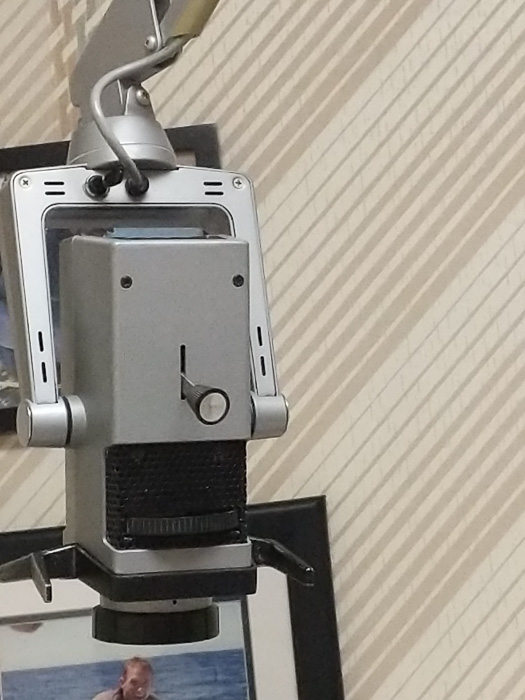
These days people are prone to thinking digitally. The internet and the handheld device are everywhere. And there’s a numbing tendency to suppose that our world could be a virtual-reality simulation on a grid. But is your mind just a few lines of code? Space a heap of blocks? Time a scrapbook of stills? The cosmos an integer? Surely not.

Some people don’t want the world to be infinite. They concoct bogus theories and metaphors to imply the world to be finite. The intellectual hero of Infinity and the Mind, Georg Cantor, had sharp words for such doubters. Here’s what he wrote in 1885:

The fear of infinity is a form of myopia that destroys the possibility of seeing the actual infinite, even though it in its highest form has created and sustains us, and in its secondary transfinite forms occurs all around us and even inhabits our minds.

We can take Cantor’s remarks as phenomenological observations about our experiences. When he speaks of “infinity in its highest form,” he means something like the Cosmic One, the Big Aha, or the White Light. It doesn’t have to be a traditional religious thing. I’m thinking of an all-suffusing glow, or a feeling that all is one—an experience which many of us have, however briefly. Thereby we get a numinous sense of the absolute infinite.

And when Cantor speaks of transfinite forms being all around us and in our minds, he’s expressing another aspect of our perceptions. When you’re in a relaxed mood, the physical world feels smooth, sensual, rich, and endless. Note, however, that if you’re feeling stressed, the world seems cramped, shoddy, and finite. Like an airport waiting room with so-called news blaring from a TV screen on the wall. Don’t want to be there.

Cantor was inspired by his wonderful 1873 theorem that the countable infinity of the integers is smaller than the infinity of decimal values on the real number line, which is often called mathematical space, or the continuum. The first of these two sets is said to have size alef-null, and the size of the second set is called c, for “continuum.”

Cantor showed that there’s a tower of infinities: starting with alef-null and alef-one. Alef-one is the next transfinite after alef-null. The scale runs ever upward. Cantor wondered if the size of c might be alef-one—this question is known as Cantor’s Continuum Problem, which is unsolvable on the basis of our current knowledge of infinity. That is, we can’t prove anything about the proper place of c among the alefs. Some new insights are needed—or perhaps c can’t be matched up with any alef at all.
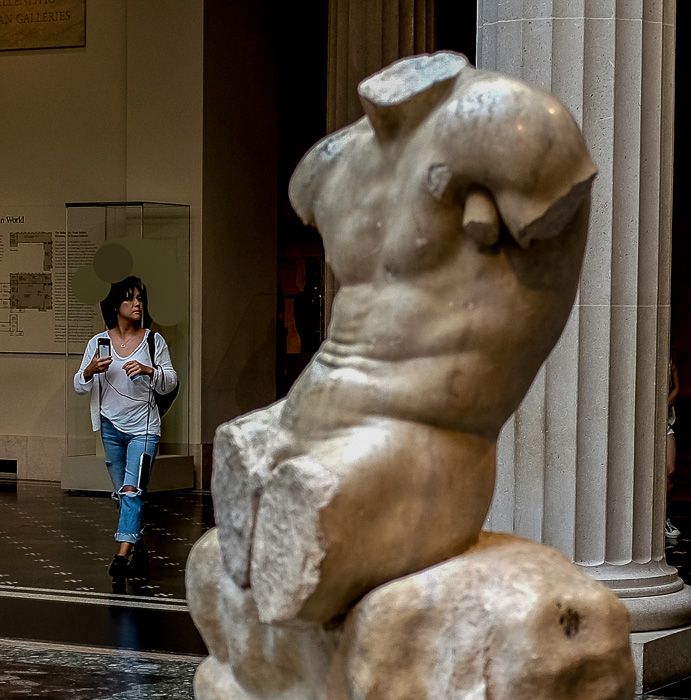
At the top of the endless run of alefs is what we call absolute infinity, or Ω. It’s like the vanishing point in a perspective painting. Ω is ineffable. If you reach out to grab it, you always find you’re holding some smaller cardinal. In set theory, this phenomenon is known as the Reflection Principle.

The Reflection Principle is related to a theological principle articulated by St. Gregory of Nyssa in the fourth century. “No matter how far our mind may have progressed in the contemplation of God, it does not attain to God, but to what is beneath God.” Let me repeat that I’m not out to discuss the God of religion here. But the science of the infinite is, you see, almost like mathematical theology.

In this note I want to broach a fresh means of bringing the transfinites into ordinary life. I have in mind an additional type of absolute infinity, that is, the absolute continuum. It’s much larger than the garden-variety space continuum of decimal numbers.

Math alert. The construction principle for an absolute continuum is this: every gap is filled.. And by a “gap” we mean any two sets of points L and R, with every member of L being less than every member of R. In an absolute continuum, there’s always a point in between. And we’re allowed to have L or R be an empty set. So if L is {1,2,3,4,…} and R is empty, then the simplest number in the “gap” will be alef-null. A more concise way to describe the absolute continuum is as what the topologist Felix Hausdorff would call an eta-Ω class.End math alert.

The construction principle for an absolute continuum doesn’t sound like much, but it produces a lot. You end up with all the familiar real numbers, plus all of Cantor’s transfinite alefs, plus the infinitesimal reciprocals of all the alefs, not to mention crazy things like “the alef-seventh root of pi divided by alef-one.”

The great John Horton Conway worked out the theory of the absolute continuum in his ground-breaking 1976 book, On Numbers and Games. The legendary old-school computer hacker Bill Gosper once remarked: “Conway is approximately the smartest man in the world.” Conway’s system was elegantly popularized in the computer-scientist Donald Knuth’s popular presentation Surreal Numbers. Wikipedia has a great entry on surreal numbers. Conway himself used the name No (as in number) for his version of the absolute continuum, and we’ll use that name for it too.
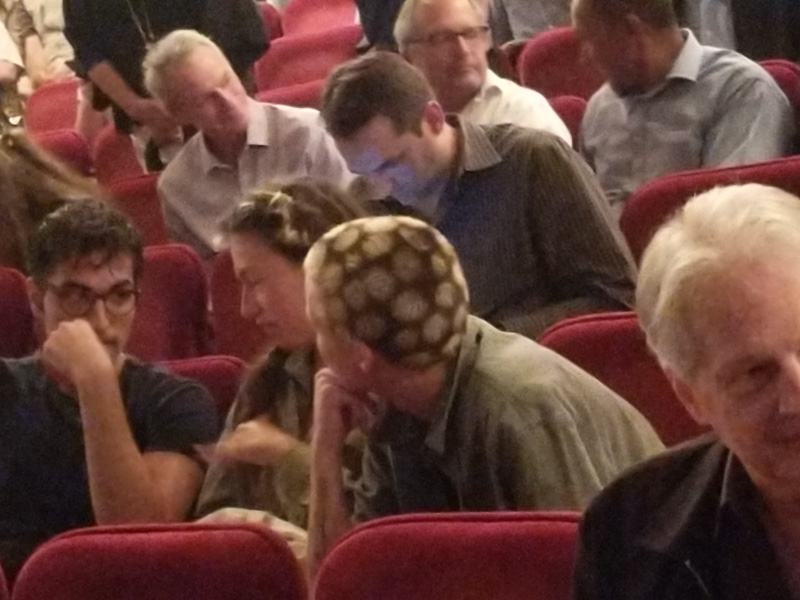
Math alert. The absolute continuum No is a type of absolute infinity that’s quite distinct from the “largest number” Ω. No is at least as big as its subclass Ω, and if No can in fact be measured on a linear size scale then it would probably have size Ω. But it could be that there’s something about No that resists being well-ordered at all. Perhaps it’s too wide, or too deep. The question of whether the absolute continuum No has size Ω is akin to Cantor’s Continuum Problem, which first asks if the decimal real number line can be measured as any alef at all, and only then asks if that size might be alef-one. End math alert.

My mission in this post is to stretch your mind and get you to imagine that we live in an absolute continuum like No. That is, our physical space is an absolute continuum, and time is an absolute continuum as well. How might we imagine this?

Infinite sets of discrete, separate objects aren’t very natural to think about—consider the stars in an endless universe, or the ticks of an eternal clock. To imagine such collections, you have to partition seamless reality into chunks, and envision all the chunks at once, and somehow enumerate them.

It’s simpler to think of infinity in terms of a continuum. An interval of time, a gradation of color, a nuance of feeling, a puff of air—these are infinitely subtle continua that fit into daily life.

And what of Cantor’s transfinites, that is, alef-one, alef-two, and the rest of his prankster band? If physical space is an absolute continuum, it extends all the way out to Ω. There are star-studded gulfs at transfinite removes. You encounter an absolutely infinite supply of planets on your way towards Ω.

But, again, it’s more satisfying to think about higher infinities that are within our immediate purview. And this can be done via the absolute continuum. Given that, for instance, alef-three is present in our spatial absolute continuum, then the reciprocal of alef-three exists—and very near by. Supernumerary gulfs of stars fit in among our atoms, nestled within our bodies like reflections in the mirrored surface of a crystal ball.

Alef-seven dreams in the petal of a rose.
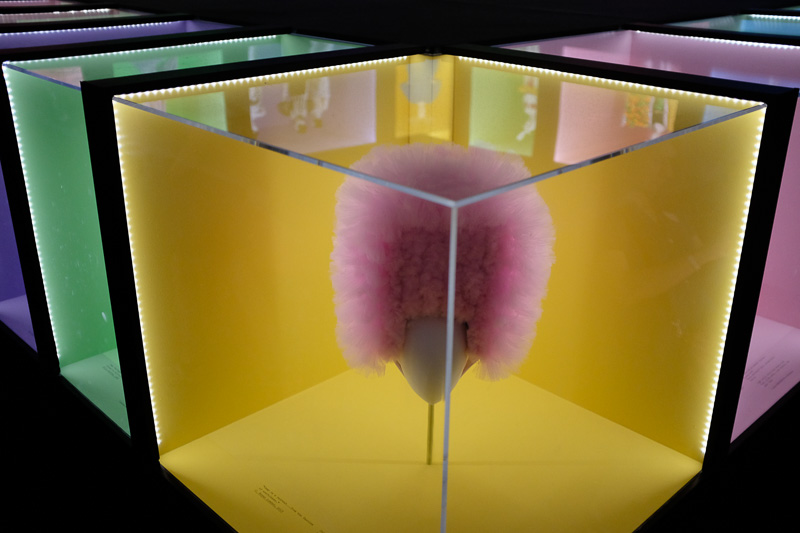
At this point I need to interrupt my agreeable fantasia and mention the tedious difficulties posed by quantum mechanics. One hears that it’s meaningless to speak of space at levels smaller than the so-called Planck length, which, measured in meters, is 1 divided by 10 to the 35th power. Which is about one sextillionth the size of a proton. Very small, but it’s not continuous, and I don’t like that. Especially if these cheapskates say that space itself is tessellated into indivisible lumps or cells that are the size of the Planck length.

Ah, the myopic fear of infinity! First comes a call for finitistic austerity, then a grudging admission that granular space doesn’t quite make sense, and then comes the lilting injunction: “Be happy! The universe is incomprehensible! How wonderful!”

(Foaming at the mouth like a rabid moose.)
To me, incoherence isn’t wonderful. It means your theory isn’t done. Reality comes first. Theories come second. The world arises on its own, and our opinions don’t limit what the cosmos can do.

Brave words, but how am I going to preserve our absolute continuum in the face of quantum mechanics? Well, let’s suppose that the quantum level is like an interzone, or a glitch, or a rumble-strip. We can trundle right over it.

And beyond, or beneath, or beside the quantum-transition layer we enter what I like to call the subdimensions. According to the viewpoint I’m describing, our physical space has sub-quantum, subdimensional levels that allow space to be an absolute continuum.

I think of an 1877 work, Die Philosophie des Als Ob, by Hans Vaihinger. In English the title would be The Philosophy of As If. I like those two German words Als Ob. Vaihinger proposes that you might, if only for pleasure, choose to believe certain kinds of metaphysical doctrines, even though there might be no hope of firmly proving these ideas.
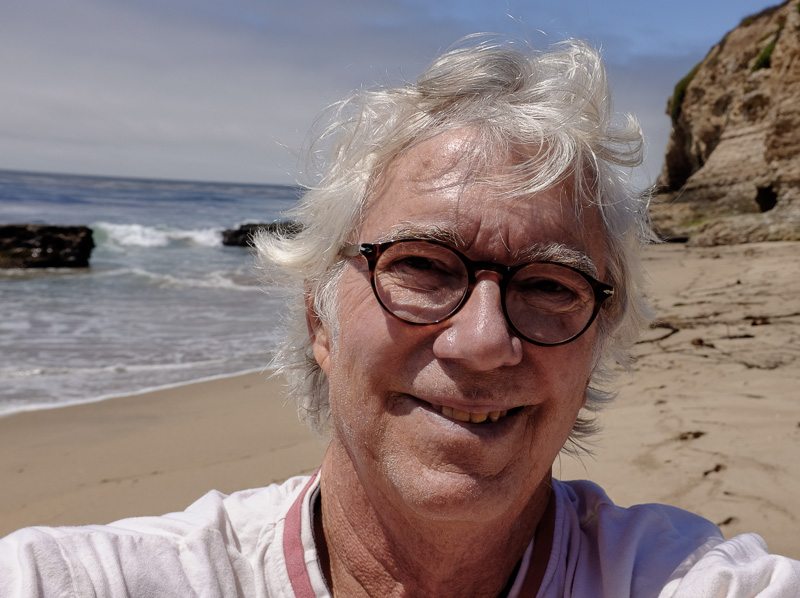
And right now I’m fascinated by the notion that our physical space is an absolute continuum. I’ve always felt it’s sad to stare out at the stars and yearn for distant vastness. We can have humongous, ginormous infinities right here. Thinking this way makes the world seem more interesting, and provides a sense of peace.
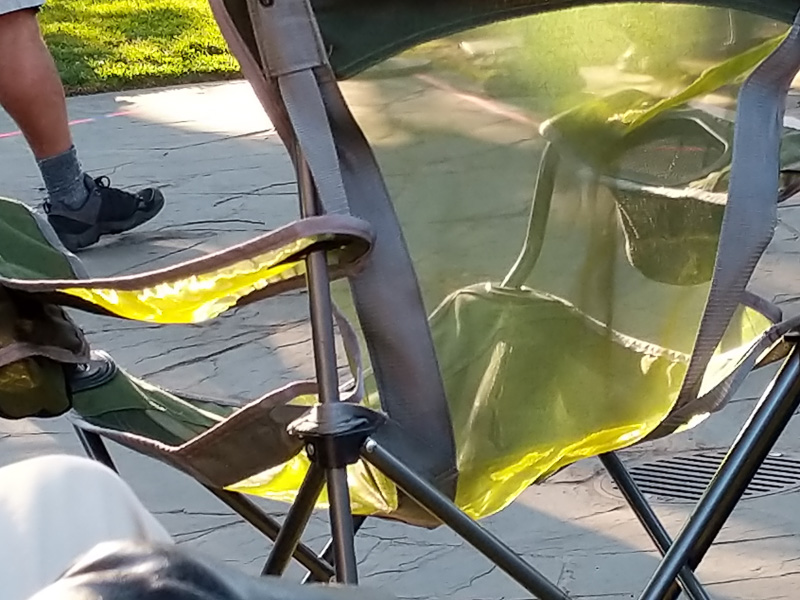
There’s an extra bonus to having our space be an absolute continuum. Mathematically, any delimited region of such a space is an absolute continuum as well. In that you occupy a region of an absolute continuum, your body comprises an absolute continuum. So you’re absolutely infinite, just as you are. Your endlessly various gnarliness runs down past the alef-seventh level, and ever deeper towards the ineffable 1/ Ω. You’re a higher being, friend.

One more bonus: adherents to the pawky doctrine of quantized space say that your body is a finite pattern, like a set of pixels. And, therefore, they prate, if space is large, then your pattern is likely to repeat, and there might be endlessly many yous. How dull. And what a waste of infinite space! The finitist argument doesn’t go through if each of us is an absolute continuum. We have enough wiggle room to be terminally unique.

For a dramatization of life in an absolute continuum, see my 2008 science-fiction story, “Jack and the Aktuals, or, Physical Applications of Transfinite Set Theory.” The tale is about a mathematician named Jack, and his visit to the land of Alefville, which is an absolute continuum. In this realm Cantor’s transfinite numbers are indeed real, both in the large and in the small. And the denizens of Alefville are called aktuals, thus the story’s title. The story appeared in the online site Tor.com , and it’s also in my anthology, Complete Stories, available in print, ebook, or browsable online.

But I didn’t go far enough in “Jack and the Aktuals.” I didn’t argue that we really are living in an absolute continuum. That’s what I do with my science and my science fiction, you see. I convince myself that the world around me is really, really weird. And that makes life more interesting.
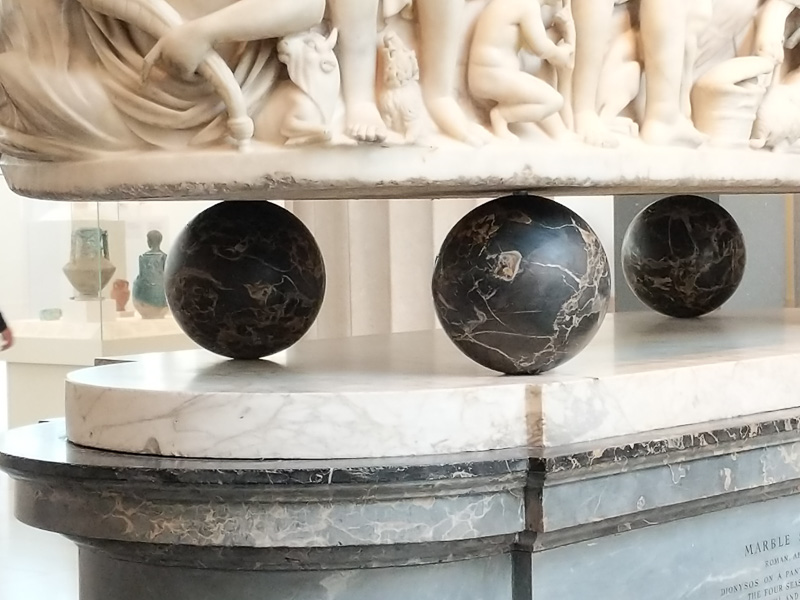
While I was working on the new preface to Infinity and the Mind, my wife Sylvia and I drove to the seaside town of Santa Cruz. While Sylvia scavenger-hunted the shops for buttons for the two grandchildren’s sweaters that she’d knit, I sat on the 3rd Avenue Beach in the sun, enjoying the long smooth waves, and pondering the absolute continuum.

As I say, I’m trying to imagine that the space around us really is transfinite—not only with all the usual real numbers, but with even more points dusted into the infinitesimal gaps. I’m supposing that space is an absolute continuum, jam-packed with surreal numbers. And never mind about atoms or quantum mechanics—you can go on down and down. And sure, there might even be superclusters of galaxies down there—why not! There’s room for everything amid the cascading levels of alefs.

Why wouldn’t our actual world be as rich as possible? The traditional philosophical Principle of Plenitude supports this view. God’s got the big budget, right? Why would the Cosmos chintz out? We’ve got the real thing, the deluxe edition. We live in an absolute continuum!

Dream with me. Let our full native space be a glittering absolute continuum, running up and down the size scales, with no end in sight. We’ve been safe in heaven all along, with stars twinkling within and without, our absolute continuum like a phosphorescent sea, like a spangled scarf, as above so below.

If only I could remember this for more than a few minutes at a time!










July 27th, 2019 at 10:23 pm
e.e.cummings wrote a poem, one verse of which was:
down with heaven and hell
and all the religious fuss
infinity pleased our parents
one inch looks good to us
He meant it as mockery of modernity; but I take it as praise. One inch? How modest of us, compared to our diva parents.
I say that a universe countably infinite in extent but finite in depth fulfills anyone’s need for mystery. Such a universe is really a multiverse, with this branch repeated infinitely often, and infinite variants of this branch repeated infinitely often. You call it waste; I call it redundancy, a safety factor. Uniqueness is over-rated.
It is also a completeness principle; all variants of you are realized in the multiverse. What’s more, those variants are all quantum-entangled at the Big Bang. So though you are inwardly finite at the Planck scale, it is through that inward finitude that you connect to infinity without.
A googolplex lightyears past Polaris, I married Naomi; a googolplex lightyears past Sirius, I married Shelley; a googolplex lightyears past Algol, I married Margo; and here I married Sherri. So Team Me has all bases covered; and looking within, I see that we all have the same heart.
As for transfinity; that is a failed attempt to impose binary logic on the infinite, which is inherently paradoxical. So I say infinity is its own power set; Cantor’s antidiagonal merely finds a buzz-bit. Omega is countable but paradoxical.
Even more radical than the Reflection Principle is the Lowenheim-Skolem Theorem, which says that for any countable language, and any model of set theory, the set of all truths about the model in the language has a countable model. So countable infinity replicates all transfinites.
I hear that when Cantor heard of Russell’s Paradox, he rejoiced that his monster, the set-of-all-sets, does not exist. I say, it’s nonexistent to binary mind. Admit paradox, and the set-of-all-sets is merely the truth constant:
for all x, (x is in the set-of-all-sets) equals True.
Russell’s set-of-non-self-containing-sets has the equation:
for all x, (x is in R) equals (x is not in x).
But then
(R is in R) equals (R is not in R).
A paradox! This freaked out Russell, Cantor, and many others. I say; calm down, it’s just tertium datur. Logic contains a grey area, a boundary value. Is dawn night or day?
In paradox logic, Russell’s Paradox is no threat; and Cantor’s antidiagonalization just detects boundary points. 0.111111… = 1.00000…; this number has two opposite digits at every place; so it could fit as an antidiagonal anywhere. So paradox logic allows a countable – though paradoxical – continuum.
down with aleph zillion
and all the transfinite spree
omega terrified Cantor
countable’s fine for me
July 27th, 2019 at 10:54 pm
Don’t get me wrong, I loves me them surreals. The absolute continuum goes as far in as it goes far out. Far out! And weird roots and logarithms… and actual infinitesimals exist, so there’s calculus right there… though epsilon-delta still works too.
I just don’t think that the absolute continuum gets past countable; it just gets into paradox. So the surreals, to the extent that they’re definite, are countable; past that is the fuzz inevitable in a continuum.
I do like that in a surreal universe we are infinite beings. But by the same logic, we are also infinitesimal beings.
July 28th, 2019 at 10:59 am
And as for the quantum limit… maybe it’s a speedbump, but it’s a really weird speedbump. Observer-centered, inherently random, nonlocal, virtuality-influenced… This challenges classical physics philosophically. It seems that Momma Nature’s trying to tell us something here. Would subdimensions have infinitesimal quantum weirdness? Would superdimensions (i.e. space on an infinite scale) have infinite quantum weirdness? Hmmm…
August 10th, 2019 at 6:53 am
Rudy, I loved this and wanted to get the new edition of the book with the new preface, but Amazon says that “This title is not currently available for purchase” 🙂 🙂
August 10th, 2019 at 4:53 pm
Thanks for the fun comments, my good paradoctor. And Guilio, I’m not sure about the problem you mention. Were you trying to buy the paperback or the ebook of the new edition? Which one? Were you using the links at the start of the article? Let me know the link of the page that tripped you up and I’ll see if there’s a fix.
August 12th, 2019 at 10:29 pm
Rudy, the Kindle version of the edition. I followed the link at the beginning. On this page:
https://www.amazon.com/Infinity-Mind-Philosophy-Infinite-Princeton-ebook/dp/B07SSTRVGY
I see “This title is not currently available for purchase.”
Perhaps the ebook is not sold in Europe?
August 16th, 2019 at 7:45 am
As for the _feeling_ of finitude… that depends. If your resources are finite but your troubles are infinite, then yeah that’s awful. But if your troubles are finite and your resources are infinite, then you have True Slack.
August 25th, 2019 at 12:54 pm
Great to see you still working on Large Cardinals etc., Rudy!! Reading your “Infinity and the Mind” when it first came out in 1980 had a HUGE impact on me, and, in fact, I am still trying to get a firmer grip on such things, only now with a great deal more, if never quite enough, technical knowledge of Set Theory.
Like you, I am a firm believer in the old “absolute continuum” idea championed since the time of the ancient mathematicians, and argued for, quite compellingly, I believe, by many mathematicians and philosophers, at least since the time of Charles Sanders Peirce, if not much before. I have always found it almost incomprehensible that while Cantor took on the enormous task of attempting to legitimate the transfinites to the mathematical community, he staunchly opposed the equal legitimacy of the infintesimals, which are, after all, merely their reciprocals!
One very simple agument I sometimes use to attempt to convince those not yet initiated into mathematical Necromancy that the infintesimals do indeed actualy exist is as follows. I will be curious to know whether any of you readers, and especially you, Rudy, believe this example actually does make it foolish to deny their existence.
Step one: Take the unit interval and mark its left side ‘0″ and its right side “1” as usual.
Step two: Make the unit line twice as long; and continue to mark its left side “0,” but now mark its right side “1/2.”
Step three: Double the line’s length again, keeping the “0” at the right side, but now placing “1/4” on the left side.
Step four: Continue doing this doubling of the line’s length, and halving of portion displayed, over and over.
Thus after “n” recursions one will have a line that is 2^n long, but which covers only the 0 to 1/[2^n] portion of the whole original line.
[In essence, then, one can think of this procedure as simply one of “magnifying” the original line by 4 with each iteration, since one is always doubling the length and halving the value of the left limit of what is displayed.]
Now we come to the point of all this!! Imagine now that “n goes to infinity.”
Our line thus becomes 2^omega units long, i.e. vastly longer than the entire Real line! But the marking that would be rightly placed out at 2^omega point on the line would be 1/[2^omega]!
We would thus be left looking at something which looks just like the Real line we all know so well, but which is composed only of numbers, — or better locations — which are LESS than 1/[2^omega] i.e. infintesimals tiny even by the tiny standards of ordinary infintesimals!
Nor would there be ANY so-called Real numbers on the entire, infinitely long line we now have drawn, since for something to be a Real number it must have at least one digit in its base 10 expression which is non-0, and as soon as that digit shows up it becomes only a very small FINITE quantity, and as such is far too large to appear anywhere on our line containing only INFINTESIMAL quantities!
To my mind this little exercise demonstrates nicely that even within the Real number “contiuum,” as it is generally conceived, there exist an uncountable number of infintesimal quantities between each and every Real number, — although tht stronger claim has not here been proved, only the case for the origin has. This reality of the infintesimal plenum seems even more amazing when we consider that even the always still finite Real numbers themselves can only be designated finitely, and thus almost universally merely indicate a linearly tiny, but full cardinality preserving, uncountable set of possible distinct extensions, and that even if their finite designation is carried out to the trillionth, or googelplex-eth, digit!
Anyway, I will be interested in seeing whether readers of this agree with me that this recursive “proof” seals the deal for the reality of the infintesimals, and hardly merely “under non-standard models,” but under the more emphatic standards of common sense!!